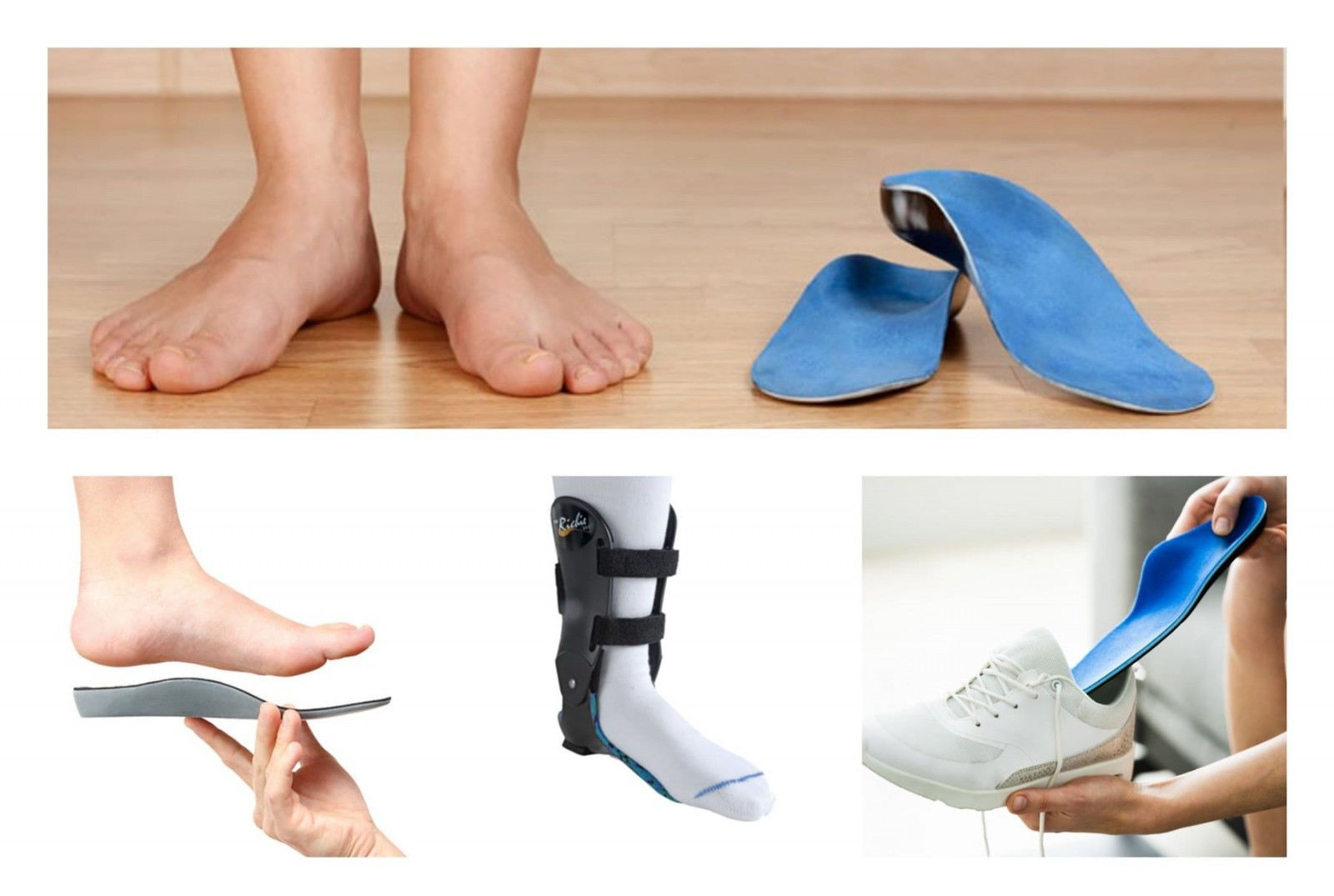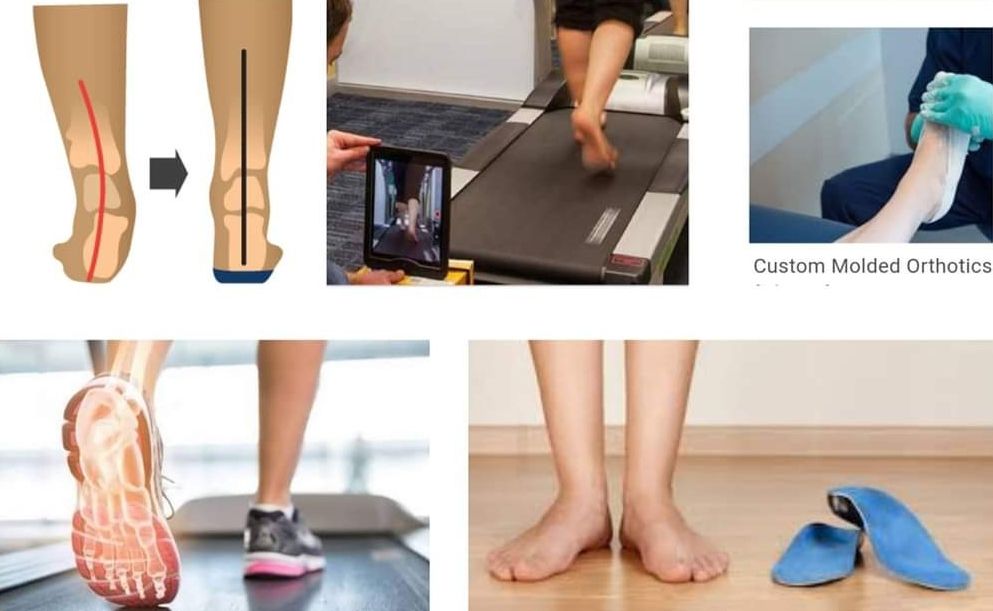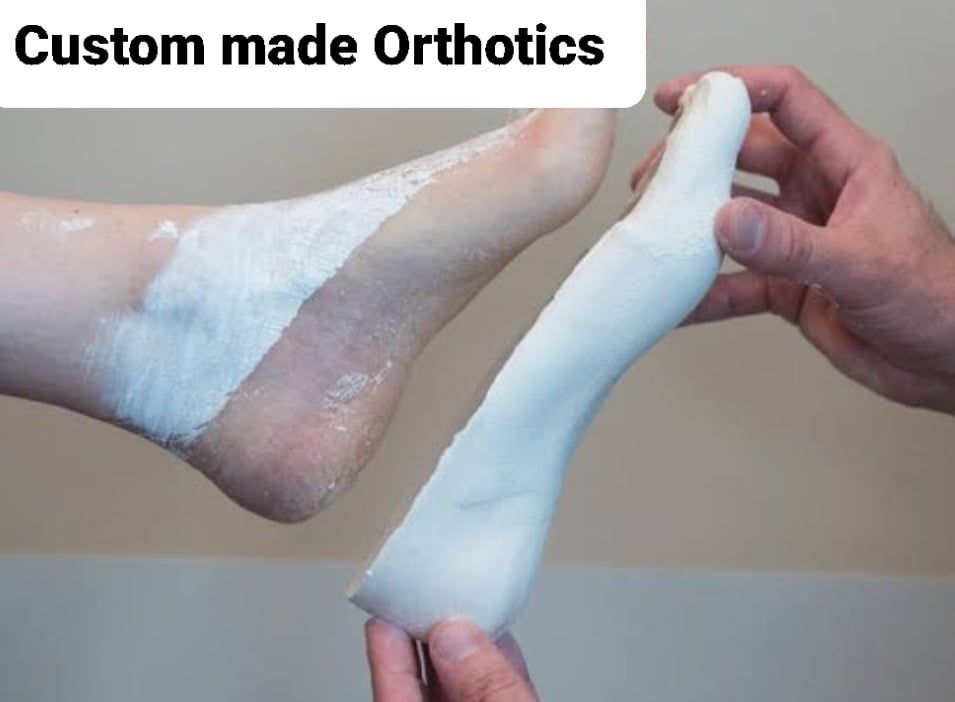Orthotics
Orthotic are prescription insoles, braces, splints and footwear which help people recover from or avoid injury, or live with lifelong conditions.

The correct supply and fitting of orthoses can help improve quality of life by reducing pain, keeping people mobile and independent and preventing more invasive and expensive interventions like surgery, amputation or the need for social care.
Do I need an orthotic?
Are your feet aching again? Are you wondering if a simple shoe insert might help? It might.
Inserts that you can buy in stores without a prescription can provide cushioning and support. They may be made of materials like gel, plastic, or foam. Inserts fit into your shoes. But they're not custom-made for your feet. They can provide arch support or extra cushioning on the heel, around the toes, or for your entire foot. Inserts might make your shoes more comfortable but aren't designed to correct foot problems and only last a few months.
Orthotics are different. They are prescription medical devices that you wear inside your shoes to correct biomechanical foot issues such as problems with how you walk, stand, or run. They can also help with foot pain caused by medical conditions such as diabetes, plantar fasciitis, bursitis, and arthritis. Orthotics might even help you avoid surgery to fix flat feet.
Still, you might not need the prescription medical devices. Sometimes, an over-the-counter shoe insert will work just fine. You'll want to ask a podiatrist, a doctor specialising in foot care, for their recommendation.
What Your Podiatrist Will Check Biomechanical Assessment
During an appointment, your podiatrist will do a thorough biomechanical examination. That will include watching you walk and noting how your feet, ankles, legs, and hips move.

If you need orthotics, your podiatrist will make a precise plaster mold of your feet. This is important to get the right fit. Once the mold is ready, a professional will turn it into rigid or soft orthotics.

Types of Orthotics
Rigid orthotics, or "functional orthotics," are made from materials like plastic or carbon fiber. They're best for walking shoes or dress shoes with closed toes and low heels. This kind of orthotic is designed to ease foot aches and strains as well as pain in the legs, thighs, and lower back that you might feel if your foot doesn't work like it should.
Soft orthotics, or "accommodative orthotics," are made from soft compression materials EVA. They provide cushioning to take the pressure off uncomfortable or sore spots from conditions such as plantar fasciitis or diabetic foot ulcers. Because of their bulk, you might need to wear soft orthotics with prescription footwear.
The orthotics are generally comfortable to wear though may need a short adjustment period. It is best to wear shoes that are fairly comfortable and not too tight in case the Podiatrist needs to fit insoles inside them. If in doubt, bring more than one pair of shoes.
You can also get special orthotics designed for sporting equipment such as ski boots and ice skates.
Book Online for a full Biomechanical Assessment Or call 0246208877 for more Information. Book Online
